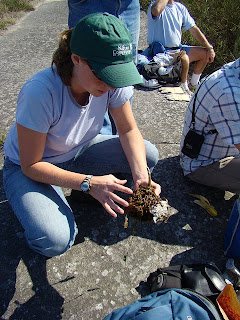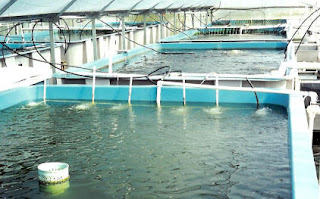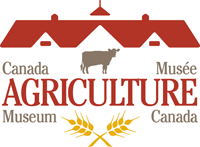
TORONTO, April 13, 2011 /Canada NewsWire/ - Become a Force for Nature this (April 10-16) as the Nature Conservancy of Canada (NCC) invites you sign up for one of over 50 Conservation Volunteers events and have an adventure in conservation.
Across Canada, NCC's Conservation Volunteers program is working to protect Canada's natural areas. This unique program takes Canadians outdoors to experience the beauty of nature while working to protect and care for some of our most precious wildlife and natural areas.
"It may be a simple gift of their time, but by joining an event, volunteers are part of something bigger - they're helping to protect the habitats and wildlife around them," explains Lisa McLaughlin, Conservation Volunteers program manager at NCC. "Volunteers work alongside professional conservationists and get to see the impact of their work first-hand!"
The program gives people of all ages the opportunity to volunteer while learning new skills, exploring unique places, and observing rare species in the wild. With events planned right across the country, there will be something for everyone.
Whether helping to provide a safe haven for endangered species, removing invasive species that choke out native plants in many regions , or planting trees, shrubs and bulbs, Conservation Volunteers play a vital role in NCC's mission to protect the pristine natural areas. Without volunteers, NCC could not achieve its conservation goals.
"The events that are my favourites are ones that have a learning or teaching element connected to them," said Tony Irwin, a Conservation Volunteer in British Columbia. "The work is striving to restore the areas to what they were like before, which sometimes involves removing invasive species and planting native ones. One of the reasons I joined the NCC was to learn how they were doing the restoration and find out what I should be doing on my own property."
Register now for this year's Conservation Volunteers events during National Volunteer Week and become a Force for Nature! Visit NCC's website to find an event near you!
Facts
...Almost 1,200 volunteers, contributed approximately 7,300 hours of volunteer work through the Conservation Volunteers program last year.
...Events in 2011 include planting prairie grass in Ontario, cleaning beach habitat for endangered Piping Plovers in Nova Scotia, clearing out nesting sites for endangered Spiny Softshell turtles in Quebec and planting marsh plants for Chinook Salmon smolt.
...Events start in mid-April and will run until late November throughout the country.
...These events are for all ages, including children, retirees, families, teens and groups of friends looking for a fun way to get outdoors and help.
...Since the program's national launch in 2008, thousands of people have nurtured nature at Conservation Volunteers events coast to coast.
...In 2010, volunteers worked to protect 7,000 acres (2,830 hectares) of land; while planting over 15,000 native plants and trees, collecting over 100 bags of garbage, removing invasive plants and recording endangered and common species on the properties.
...The Conservation Volunteers program provides a unique and fun way to experience nature while learning about the world around us.
As a proud supporter of the Nature Conservancy of Canada, Toshiba Canada is providing digital camcorders to support the Conservation Volunteers Roving Reporters across the country. The Roving Reporters will capture short and fun video clips of Conservation Volunteers at work.
Learn More
...Sign up for an event at
www.conservationvolunteers.ca...Follow us on Twitter:
twitter.com/NatureConsCDA...Become a fan on Facebook
...See volunteers at work on NCC's Flickr Page
http://www.flickr.com/groups/ncc-conservationvolunteers...Check out what volunteers are saying about the program
www.natureconservancy.caTo register for events taking place in your area visit
www.conservationvolunteers.caThe Nature Conservancy of Canada is the nation's leading land conservation organization, working to protect our most important natural areas and the species they sustain. Since 1962 NCC and its partners have helped to protect more than 2 million acres (800,000 hectares), coast to coast. To learn more visit:
www.natureconservancy.ca


















